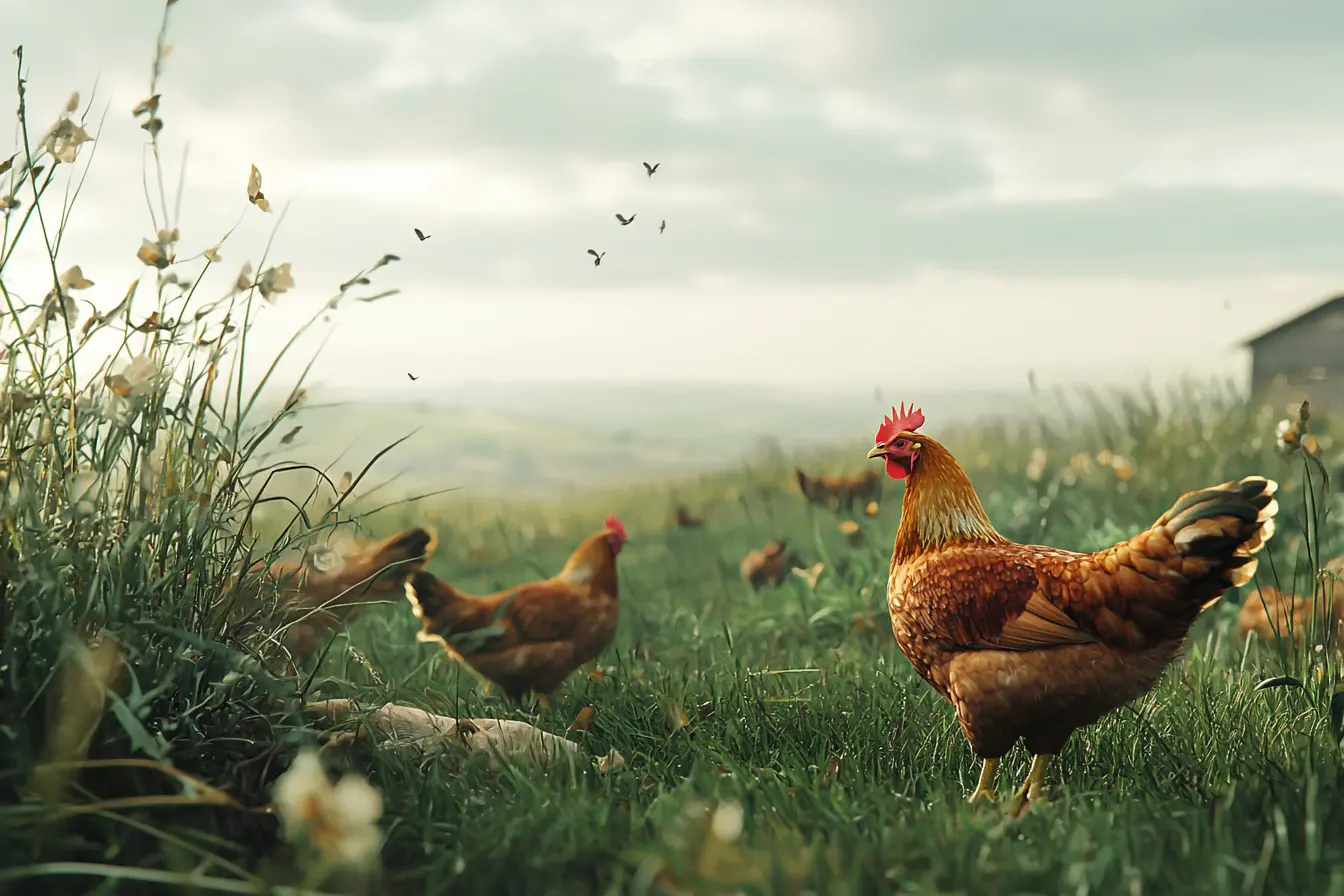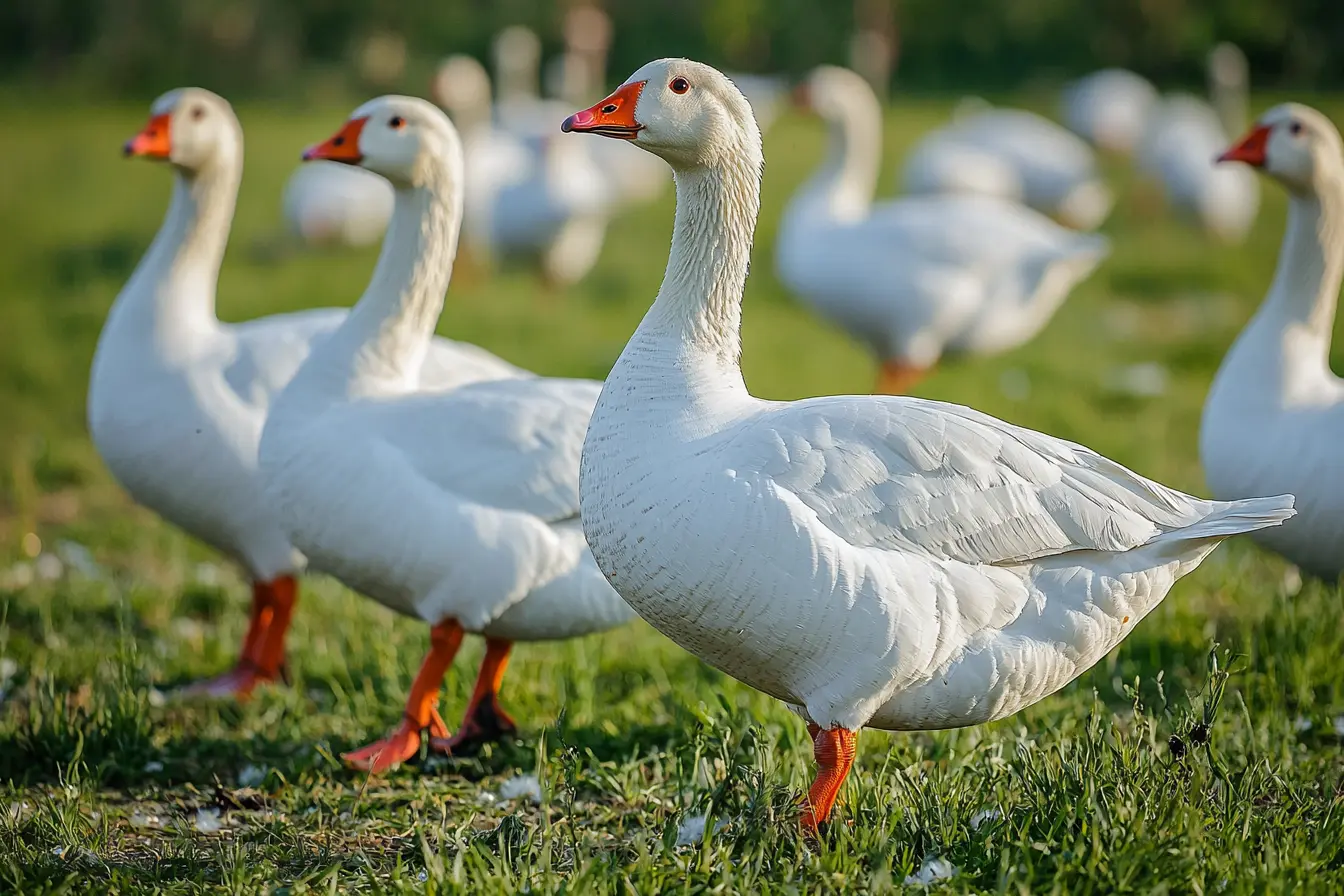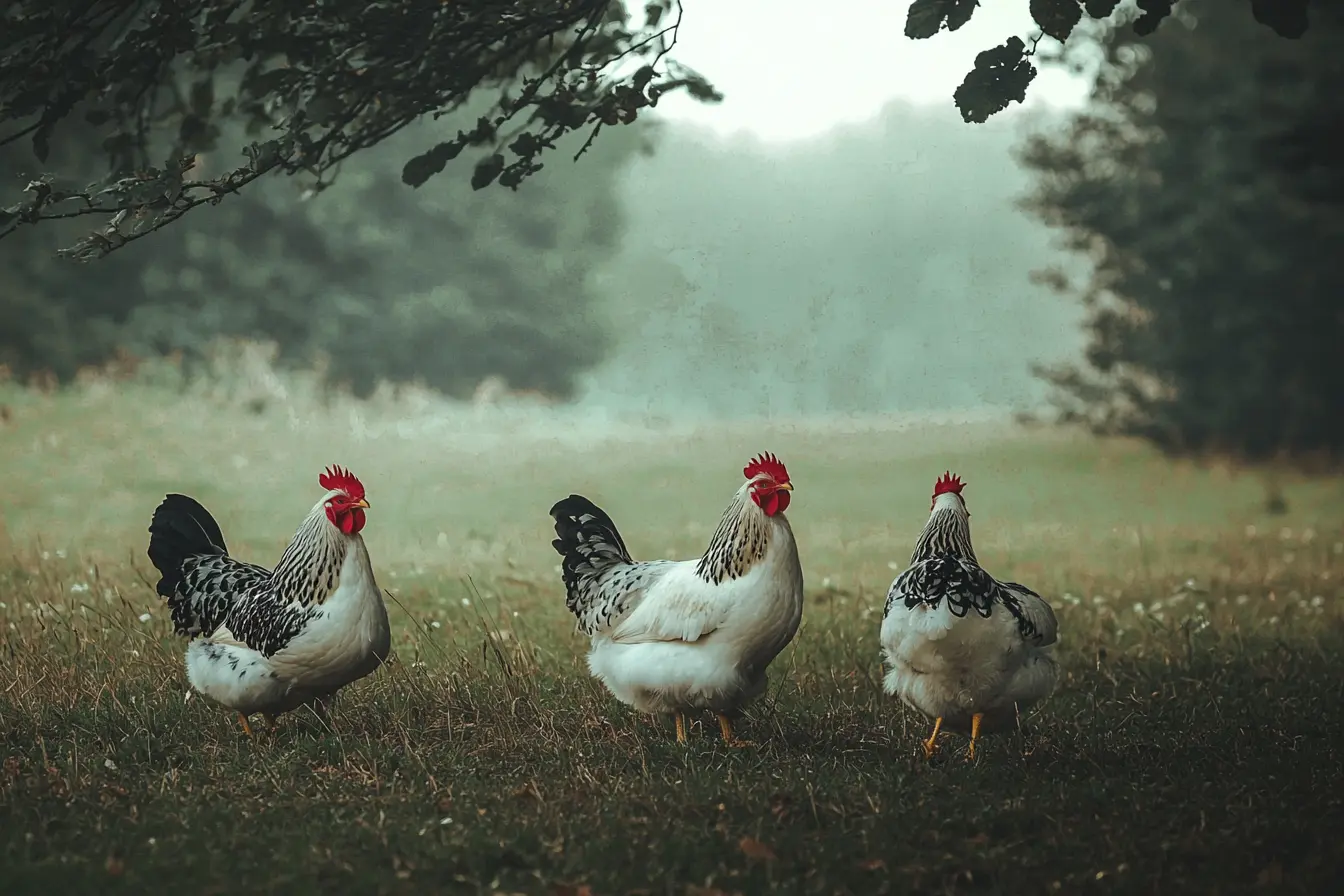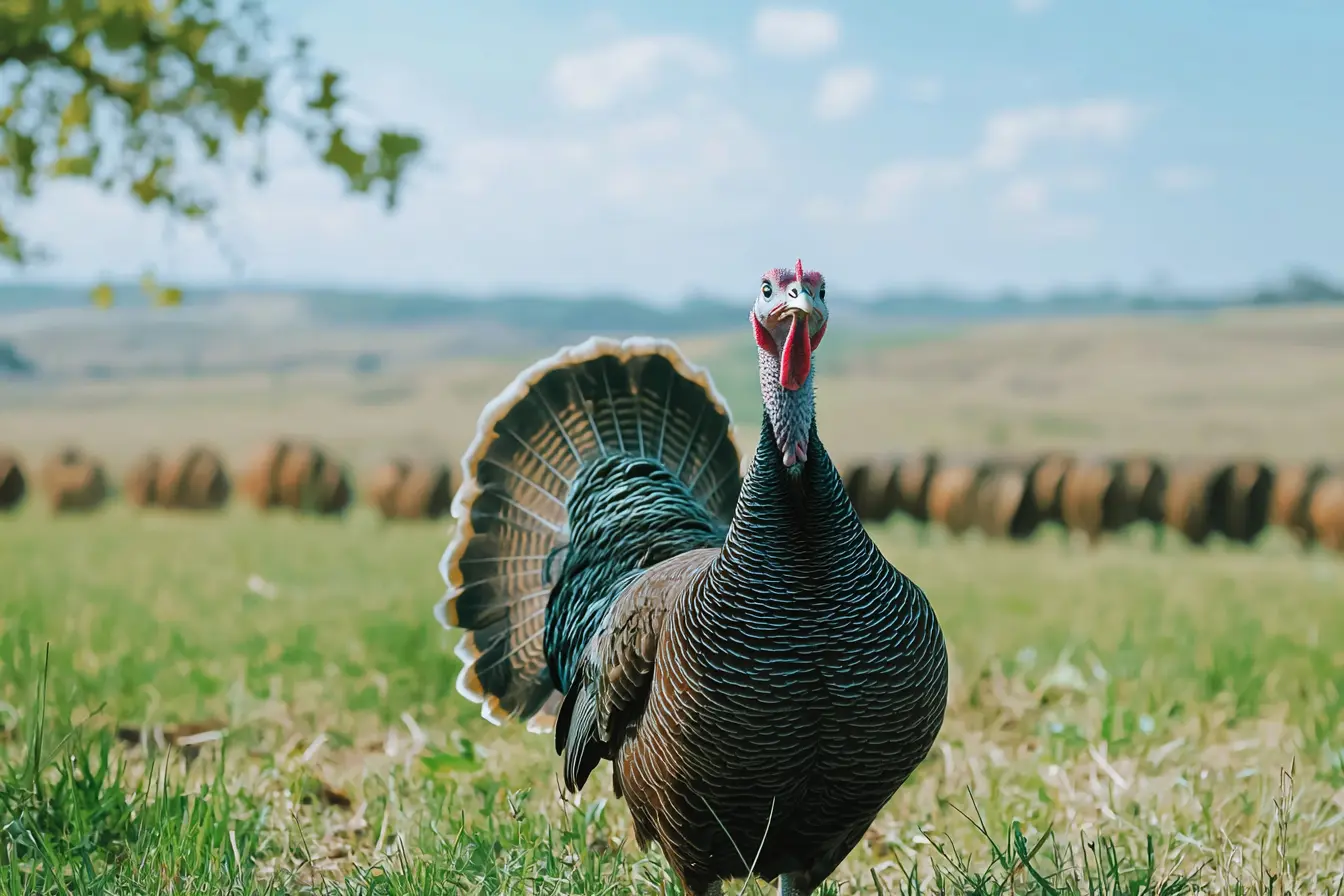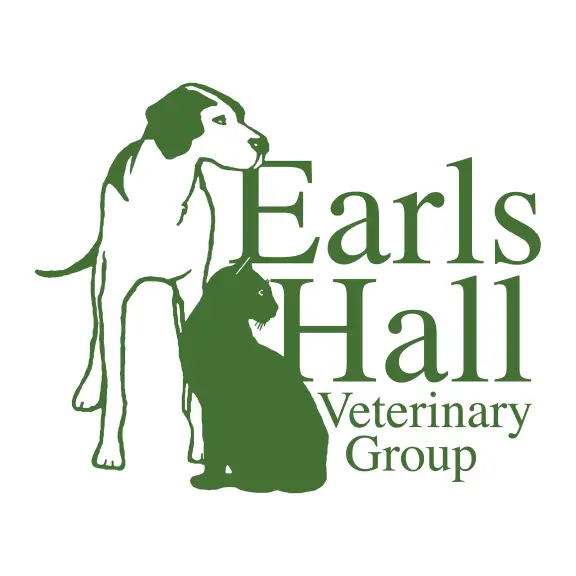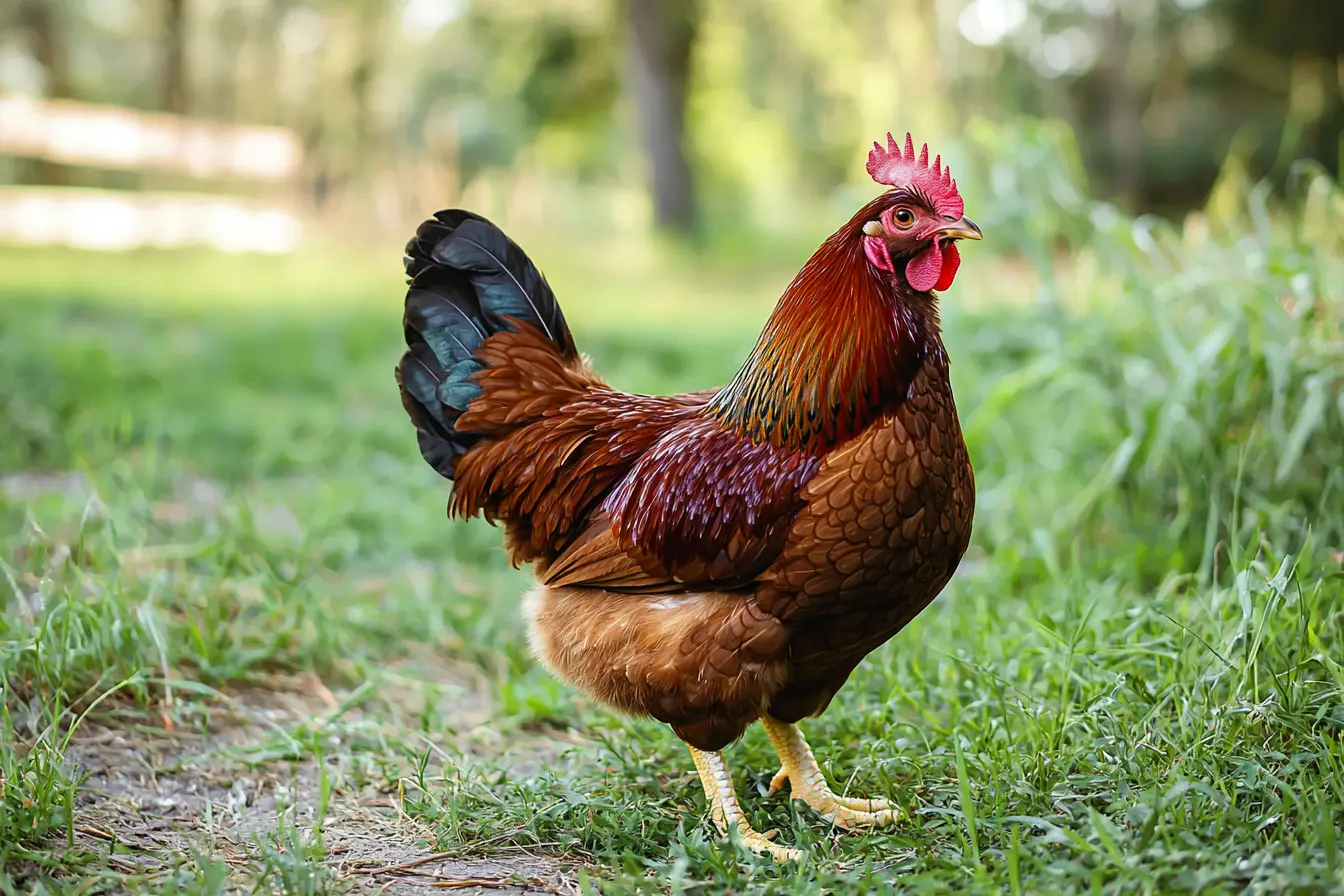
A Complete Guide to Keeping Rhode Island Red Chickens
Rhode Island Red chickens are one of the most popular and reliable backyard poultry breeds, known for their hardiness, excellent egg production, and friendly disposition. Whether you're considering them for eggs, meat, or as charming additions to your garden, this comprehensive guide will cover everything you need to know about caring for Rhode Island Reds in the UK.
Introduction to Rhode Island Red Chickens
Originally developed in the United States, Rhode Island Reds have become a favourite among UK poultry keepers due to their versatility and ease of care. They are classified as a dual-purpose breed, meaning they are suitable for both egg and meat production, though they are most commonly kept for their prolific egg-laying capabilities.
Key Characteristics:
- Lifespan: 5-8 years with good care
- Egg Production: 250-300 large brown eggs per year
- Temperament: Hardy, friendly, and active
- Size: Medium to large (hens weigh around 2.5-3.5 kg; roosters 3.5-4.5 kg)
- Colour: Deep reddish-brown with a black tail
- Comb Type: Single comb, which may require extra winter care
Why Choose Rhode Island Reds?
Rhode Island Reds offer numerous benefits for poultry keepers of all experience levels:
- Prolific Egg Layers: With consistent egg production year-round, they are ideal for households seeking a steady egg supply.
- Hardy and Resilient: Adaptable to the UK's variable climate, they handle both hot summers and cold winters well.
- Low Maintenance: Rhode Island Reds are easy to care for and require minimal special attention.
- Dual-Purpose Breed: Suitable for both eggs and meat production.
- Good Foragers: They are excellent at free-ranging and can help control pests in the garden.
Housing Requirements
Providing the right housing is essential for the health, safety, and productivity of your Rhode Island Reds.
Coop Requirements
- Size: Allow at least 0.4 square metres per bird inside the coop.
- Ventilation: Proper airflow is necessary to reduce moisture and ammonia build-up.
- Nesting Boxes: Provide one box for every 3-4 hens, lined with straw or shavings.
- Perches: Each hen needs around 20-30 cm of roosting space.
Run and Free-Range Space
Rhode Island Reds are active birds and enjoy having space to explore.
- Minimum Space: 1 square metre per bird in a secure run.
- Free-Range Benefits: They are excellent foragers and thrive when allowed to roam.
- Predator Protection: Use sturdy fencing to protect against foxes and birds of prey.
Tip: Ensure the run is equipped with shade and shelter for protection against the elements.
Feeding Your Rhode Island Reds
A balanced diet is crucial for maintaining their health and egg production.
Essential Nutrition
- Layers Pellets (16-18% protein): A staple feed that provides all the essential nutrients for laying hens.
- Grit: Helps with digestion and breaking down food in the gizzard.
- Greens and Treats: Vegetables, fruit, and occasional mealworms can be offered in moderation.
- Fresh Water: Ensure a constant supply, especially in hot weather.
Feeding Tip: Avoid overfeeding treats, as this can lead to obesity and reduced egg production.
Health and Common Concerns
Rhode Island Reds are generally healthy and robust, but they can still encounter common poultry health issues.
Common Health Issues
- Parasites (mites, lice): Regularly inspect the flock and treat with poultry-safe powders or sprays.
- Worms: Implement a regular worming schedule every 3-6 months.
- Respiratory Problems: Ensure the coop is well-ventilated to prevent respiratory infections.
- Bumblefoot: Check their feet for cuts or swelling caused by rough surfaces.
Preventative Care: Keep the coop clean, provide a balanced diet, and conduct regular health checks.
Rhode Island Red Behaviour and Handling
Rhode Island Reds are known for their friendly and curious nature, making them a joy to have in any flock.
- They are confident and sociable, often seeking out interaction with their owners.
- Hens are typically docile, but roosters can sometimes become territorial.
- They are excellent foragers and enjoy exploring their surroundings.
Handling Tip: Regular handling from a young age helps to keep them tame and accustomed to human interaction.
Egg Production and Collection
Rhode Island Reds are one of the most consistent layers, producing large brown eggs for most of the year.
Egg-Laying Tips
- They usually start laying at around 18-20 weeks of age.
- Provide supplementary light in winter to maintain productivity.
- Ensure nesting boxes are clean and inviting to encourage laying.
Egg Collection: Collect eggs daily to prevent breakages and discourage egg-eating behaviour.
Winter Care for Rhode Island Reds
While Rhode Island Reds are cold-hardy, they still require some additional care during the winter months.
- Insulated Housing: Ensure the coop is well-insulated but still ventilated.
- Water Supply: Use heated drinkers or check regularly to prevent freezing.
- Extra Bedding: Provide thick bedding such as straw or wood shavings for warmth.
- Comb Protection: Apply petroleum jelly to their combs to prevent frostbite.
Breeding and Raising Chicks
Rhode Island Reds are not typically broody, meaning they may not naturally sit on eggs, but they are excellent mothers if they do.
Breeding Tips
- Use an incubator if hens do not go broody.
- Chicks require warmth, chick crumbs, and a secure brooding area.
- They mature relatively quickly and can start laying eggs around 18-22 weeks.
Legal Considerations in the UK
Before keeping Rhode Island Reds, check with your local council regarding poultry regulations and ensure you comply with the following:
- Noise Restrictions: Roosters can be noisy and may not be permitted in urban areas.
- DEFRA Guidelines: Stay informed about avian influenza prevention measures.
- Neighbour Relations: Ensure your chickens do not cause nuisance with noise or odours.
Conclusion
Rhode Island Reds are an excellent choice for poultry keepers in the UK, offering a balance of high egg production, hardiness, and friendly temperament. Whether you are a beginner or an experienced poultry keeper, Rhode Island Reds are sure to be a valuable addition to your flock.
With proper care, housing, and nutrition, they will provide you with a steady supply of eggs and companionship for many years to come.
Contents
- Introduction to Rhode Island Red Chickens
- Why Choose Rhode Island Reds?
- Housing Requirements
- Feeding Your Rhode Island Reds
- Health and Common Concerns
- Rhode Island Red Behaviour and Handling
- Egg Production and Collection
- Winter Care for Rhode Island Reds
- Breeding and Raising Chicks
- Legal Considerations in the UK
- Conclusion
Tags
Related Vets
Vets near you
Speciality vets
- Aquatics vet specialists
- Birds vet specialists
- Camelids vet specialists
- Cats vet specialists
- Cattle vet specialists
- Deer vet specialists
- Dogs vet specialists
- Equines vet specialists
- Exotic vet specialists
- Goats vet specialists
- Pigs vet specialists
- Poultry vet specialists
- Sheep vet specialists
- Small Mammals vet specialists
- Wild vet specialists
